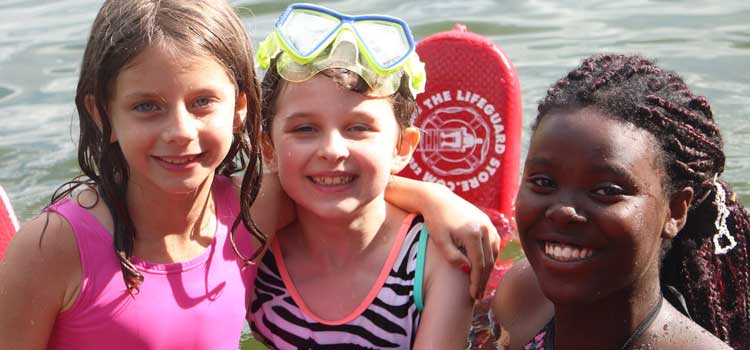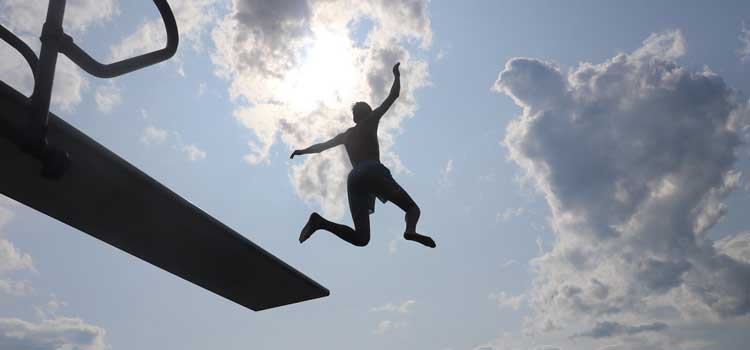For John Tilley, summer camp is life. He first worked in camp as a Junior Counselor 31 years ago, and as director of YMCA Camp Coniston he’s been responsible for creating unforgettable camp experiences for tens of thousands of kids over the past 21 years. Coniston is a large traditional summer camp situated on 1,600 acres in the middle of New Hampshire that attracts campers from 39 states as well as the local community. As a nonprofit, it runs off of programming and fundraising income. Tilley keeps camp costs low so middle-class families can afford registration – the result is a camp that runs at 100% capacity and a 90% return rate year-over-year.
Like many camp directors, Tilley made the difficult decision to cancel camp this summer due to COVID-19. He was subsequently faced with serious financial concerns and the challenge of finding ways to cover the lost income in the midst of a global pandemic.
He approached the need to fundraise for his summer camp by telling a strong story, finding ways to pivot without fear, and developing a multi-faceted approach with donors of varying levels. We hope that his story and tips can help you as you fundraise for your own nonprofit summer camp.
Camp Fundraising Tip #1: Think creatively and lean on existing funder relationships

Going back to late spring, Tilley believed that Coniston would be open and that he’d be able to run some type of programming this summer. “Honestly,” Tilley says, “I couldn’t imagine not operating.” As the days and weeks passed, and he ultimately did have to cancel this summer’s sessions, he came up with an alternative plan: to open Coniston just for the children of essential workers in the local area at no cost. Successful fundraising is always anchored in a strong story, and Tilley took his idea and told it to a major donor he’d already been cultivating to see if there was interest in funding this new program idea.
“I asked if she would give us a donation to open for the children of low-wage essential workers,” he says, “people who need childcare and come from local communities.” He was thrilled when the donor bought in and made a significant donation to support this vision.
Unfortunately, as with many plans this summer and due to the progression of COVID-19, Tilley’s version of running camp for essential workers’ kids was not to be. “That dream lasted about two weeks,” he says. When the donor came back and asked for a backup plan regarding her grant, Tilley said, “I don’t know, but I’ll tell you on Monday.”
Successful fundraising is always anchored in a strong story, and Tilley took his idea and told it to a major donor he’d already been cultivating to see if there was interest in funding this new program idea.
Camp Fundraising Tip #2: Be flexible and maintain open and honest communication with donors

Back at camp that same day, Tilley happened to receive an email from a Coniston alumnus asking if he could bring his family to camp. He was looking for a safe place for his kids to play and where he could reconnect with his older parents who had not left their house for six weeks. “He said that when he was going to camp it felt like home, and it became home,” Tilley recounts, and he was looking for an opportunity to recreate that feeling and reunite his family. “It was an incredibly emotional letter,” he says, “and it made me think, maybe we should look at providing this service over the summer.”
Tilley went back to the donor with a new pitch. “I said, I’ve got 1,600 acres, enormous fields, and a 150-acre lake. What happens if we open to the local community so they can come and be with family in a socially distant manner?” For a second time that month, Tilley got a thumbs up and was able to retain the grant that would make up for a large portion of Coniston’s lost revenue. It would also enable him to actualize his desire to make some version of camp available to the local community.
Camp Fundraising Tip #3: Make asks of donors of varying levels and with different connections to your camp

The major gift was hugely important, but Tilley knew that he needed more donations to cover this summer’s missing income. He also wanted to be able to offer robust programs next summer, to serve diverse populations, and to ensure that the pandemic would make as small of an impact as possible on the camp’s overall operation. To achieve these goals, Tilley reached out to members of the Coniston community, cast his vision, and asked them for donations. Tilley made calls and then had others make asks of their friends, even from people who didn’t have kids at camp – an important person-to-person approach. The results? Some gave hundreds, others significantly more, and Tilley was able to combine them into a challenge match of $250,000.
With match in-hand, Tilley and his staff produced a video aimed at a wide audience. They announced the matching challenge and asked for more donations. Unlike some camps that were reluctant to disclose details about their financial challenges, Tilley took the approach of full transparency. “We faced a worst-case scenario, a $1.3 million loss,” he says, “I think by sharing that, it encouraged people to take an action they may not have ordinarily taken.”
Tilley made calls and then had others make asks of their friends, even from people who didn’t have kids at camp – an important person-to-person approach.
Camp Fundraising Tip #4: Tell donors what you need and how their contributions will be used

Tilley did not know what to expect, but by early July donations had totaled almost $800,000, all to help sustain camp this summer and move forward on other plans. The funds will keep Camp Coniston operational through the closure and will even cover some of the cost of new buildings to accommodate underserved campers from the local community.
Tilley says that he feels sheer gratitude and that this process has shown him that families really understand the impact of camp on their kids’ lives. For nonprofit camps who are discouraged or unsure if this is a good time to tell their story and ask for financial support, consider that Coniston had already received 800 applications for summer 2021 – at a time when typically there would have been around 200.
In his 21 years at camp, Tilley’s never seen anything like this – both in terms of the pandemic, but also the outpouring of love and financial support. His hope in sharing his story is that other nonprofit camps can model their fundraising campaigns based on his approach of storytelling, willingness to adapt, transparency, and reaching out to donors of all levels. This can guide you as you build a strong base of support that will allow your camp weather not only this storm, but also any that may come in the future.
